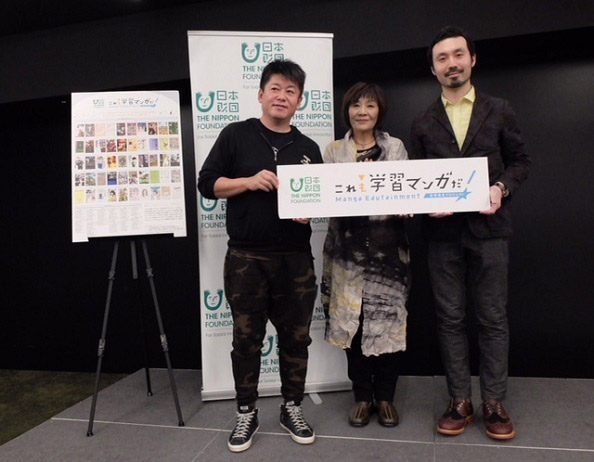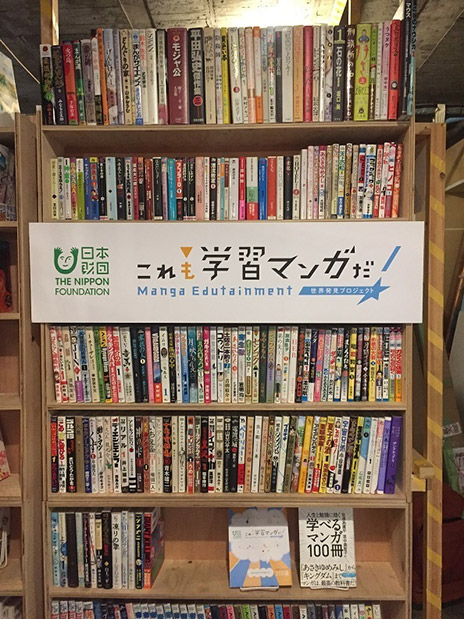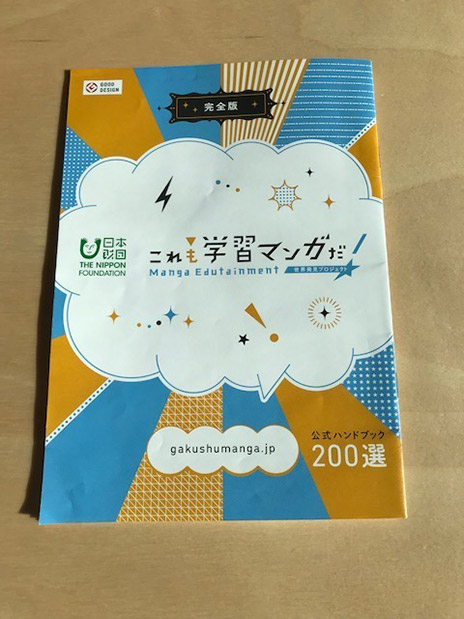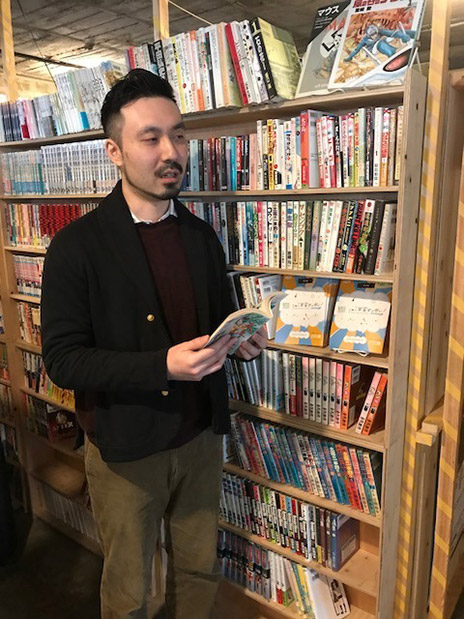Number of Selected Educational Manga Reaches 200!50 works added in November 2017 amid growing interest from libraries
The Nippon Foundation is promoting the Manga Edutainment Project to Open New Worlds to identify manga (Japanese comic books) that are published as general works but can also open new worlds and lead to learning. The selection panel added 50 titles to its list of designated manga in November 2017, bringing the total to 200, and the list of the 200 manga has been published as “Educational Manga! Official Handbook to All 200 Manga.” The Nippon Foundation intends to continue to promote manga as a way to “learn while having fun” going forward.

Japan has a category of “educational manga,” but these are created specifically as study aids to deepen understanding of school subjects in an easy-to-read format. At the same time, there are many conventional “story manga” that were not created as study aids, but are nevertheless full of valuable wisdom and knowledge. These are the works being selected and promoted by the Manga Edutainment Project. The works have been selected by a 10-member panel chaired by manga artist Machiko Satonaka (in fiscal 2017 the panel was expanded to 11 persons with the addition of entrepreneur Takafumi Horie). The panel selected 100 manga in 2015, and added 50 titles each in 2016 and 2017, bringing the total to 200.
The 200 works are divided into 11 genres, with the largest number categorized as “professions” (with 26 titles), followed by “society” (24), “history” (21), “life and the world” (20), and “art” and “diversity” (18 each). The artist with the most selections is Osamu Tezuka, with three titles including “Phoenix.”

Referring to the newly published handbook, Ms. Satonaka noted, “In one sense, all Japanese manga are educational, which makes it difficult to make the selections. Unlike the previous rounds, this time I asked the judges to place a priority on the depth of the works. I hope that both children and adults will read many of these quality manga.”
Yasuhiro Yamauchi, founding member of the Manganight initiative to promote manga, is director of the Manga Edutainment administrative office and a member of the selection panel. He pointed out that with the selection of a series of educational manga, interest among libraries has been growing as libraries give increased attention to manga as a way of offsetting the shift away from reading books. He also commented that in recent years, libraries are playing a greater role as “third places” that are neither the home nor school, where children can spend their free time, and that this is appears to be leading to a gradual increase in demand for manga. As the number of manga being printed increases, the handbook published by The Nippon Foundation is becoming a valuable guide, and the Foundation is receiving many requests for the handbook from libraries. In particular, there has been a sharp increase in inquiries regarding educational manga from high school libraries, which accounted for roughly half of all inquiries in fiscal 2016. Mr. Yamauchi conjectures that this is because high school students who are considering careers read manga to learn about different types of work and the values of people who work in various jobs.
Mr. Yamauchi added that educational manga play a role in raising awareness of social issues, commenting, “Thousands of manga are published every year, so I think we should review the list of 200 in the future. In the interest of timeliness, it would be good to revise the list every five years.”


Related News
-
 Comprehensive Ranking of Educational Manga Announced – Top-ranked and other selected manga donated to TSURUMI Children’s Hospice (2017.02.14)
Comprehensive Ranking of Educational Manga Announced – Top-ranked and other selected manga donated to TSURUMI Children’s Hospice (2017.02.14)
-
 Manga Edutainment 2016! – 50 new works announced by committee chaired by Machiko Satonaka (2016.10.27)
Manga Edutainment 2016! – 50 new works announced by committee chaired by Machiko Satonaka (2016.10.27)
-
 Japan’s First Community-Supported Hospice for Seriously Ill Children
Japan’s First Community-Supported Hospice for Seriously Ill Children
Contact
Communications Department
The Nippon Foundation
- E-mail:cc@ps.nippon-foundation.or.jp



